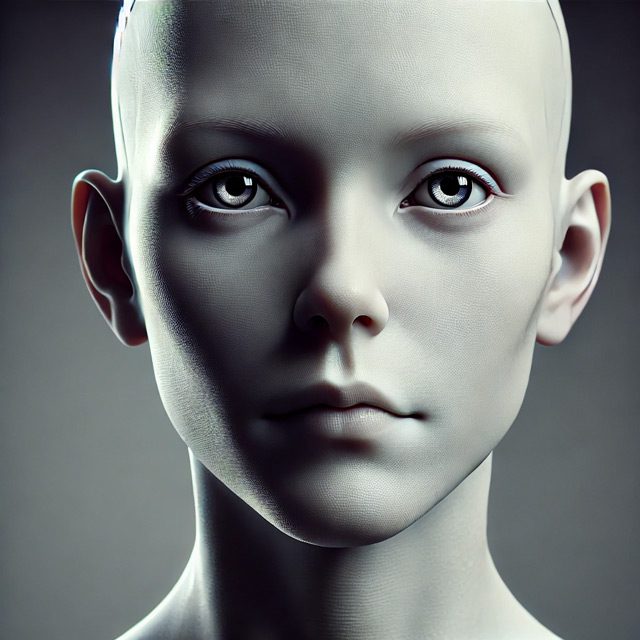
The uncanny valley is a phenomenon that has captivated artists, psychologists, and technologists for decades. It describes the unease people feel when encountering something that is nearly, but not quite, human. Introduced by Japanese roboticist Masahiro Mori in 1970, the concept initially focused on human-like robots. Over time, it has expanded into art, design, and digital media, where it serves as a powerful lens to explore identity, emotion, and the boundaries of humanity. This article delves into the uncanny valley’s origins, psychological roots, artistic applications, and its future in a technologically evolving world.
Origins of the Uncanny Valley Concept
Masahiro Mori’s 1970 essay “Bukimi no Tani,” or “The Uncanny Valley,” introduced the concept to describe how humans react to lifelike robots. Mori observed that as robots became more human-like, people’s reactions grew more positive—until the point where the resemblance became too close yet imperfect. This abrupt shift from familiarity to discomfort is what he termed the “uncanny valley.”
The uncanny valley is rooted in older psychological theories. Sigmund Freud’s concept of the “unheimlich,” or the uncanny, describes the discomfort that arises from encountering something simultaneously familiar and strange. Freud linked this feeling to repressed fears and desires, making it a compelling tool for artistic exploration. Early examples include wax figures and automata, which sparked fascination and dread in equal measure.
Art has long drawn from the uncanny to challenge perceptions. Surrealists like Salvador Dalí and early filmmakers such as Georges Méliès created works that blurred the lines between the real and the fantastical. These experiments laid the groundwork for contemporary artists to explore the uncanny valley across various mediums.
The Role of Psychology in the Uncanny Valley
The uncanny valley’s impact is deeply tied to human psychology. Cognitive dissonance plays a key role in the discomfort it evokes. When something appears nearly human but contains subtle deviations—such as asymmetrical features or stiff movements—the brain struggles to categorize it, triggering unease. This reaction is thought to have evolutionary roots, as detecting anomalies could signal danger.
Freud’s exploration of the uncanny links it to deeper psychological fears, such as the fear of death or losing control. For example, lifelike dolls or mannequins can evoke a sense of mortality or loss of identity, themes that often resonate in uncanny art. Similarly, objects that mimic life challenge our assumptions about what it means to be human, forcing introspection.
Research has shown that cultural and individual factors influence how people react to the uncanny valley. While some individuals are particularly sensitive to lifelike anomalies, others experience little to no discomfort. This variability adds a subjective dimension to the uncanny valley, making it a rich field for artistic exploration.
How Artists Leverage the Uncanny Valley
Artists across disciplines use the uncanny valley to provoke strong emotional responses. Ron Mueck, for instance, is renowned for his hyper-realistic sculptures of human figures. By exaggerating scale—creating oversized or miniature versions of people—he disrupts viewers’ sense of reality, drawing them into an unsettling yet mesmerizing world.
Mark Jenkins takes a different approach with his street installations, which feature human-like figures in unexpected or provocative poses. Passersby often mistake these sculptures for real people, creating a moment of confusion and introspection. Jenkins’ work underscores how context can amplify the uncanny.
In cinema, the uncanny valley is evident in films such as The Polar Express. While its CGI characters are lifelike, their slightly unnatural movements create unease. Similarly, video games like Detroit: Become Human use hyper-realistic avatars to explore themes of emotion, morality, and what it means to be human.
The uncanny valley also thrives in digital art. Artists use tools like 3D modeling and motion capture to create lifelike simulations that challenge viewers’ perceptions. These works often blur the boundaries between the real and the artificial, encouraging viewers to question their understanding of reality.
The Uncanny Valley in Digital and Contemporary Art
Digital technologies have propelled the uncanny valley into new realms of artistic expression. Generative adversarial networks (GANs), for example, allow artists to create hyper-realistic faces that don’t exist in reality. These AI-generated images often occupy the uncanny valley, with their eerie imperfections sparking both fascination and discomfort.
Virtual reality (VR) and augmented reality (AR) further amplify the uncanny valley’s impact. Artists like Rachel Rossin use these technologies to create immersive environments populated by lifelike avatars. These experiences force participants to navigate a world that feels simultaneously real and artificial, deepening their engagement with the uncanny.
The tension between authenticity and artificiality is central to the uncanny valley’s appeal in contemporary art. AI-generated works challenge traditional notions of creativity and authorship, while VR installations push the boundaries of sensory perception. This interplay makes the uncanny valley a focal point for debates about the future of art.
Cultural Reactions to the Uncanny Valley
Reactions to the uncanny valley vary across cultures, reflecting differing values and attitudes toward technology and humanity. In Western cultures, lifelike humanoid figures often evoke discomfort, as they are associated with themes of death or the supernatural. In contrast, Japanese culture tends to embrace humanoid robots as symbols of progress and harmony.
This cultural divergence extends to art. Western artists often emphasize the eerie and unsettling aspects of the uncanny valley, while East Asian artists may focus on its harmonious integration with humanity. For example, robotic sculptures in Japanese art often highlight the beauty of blending human and machine elements, rather than their discord.
Despite these differences, the uncanny valley resonates universally as a theme that explores the boundary between the familiar and the strange. Its ability to evoke both fear and fascination makes it a powerful tool for cross-cultural artistic dialogue.
Ethical Implications of the Uncanny Valley in Art
The use of the uncanny valley in art raises ethical questions about its emotional impact on audiences. Artists who deliberately evoke discomfort must consider whether their work crosses boundaries of manipulation. For example, hyper-realistic avatars in VR installations can exploit psychological vulnerabilities, raising concerns about consent and emotional well-being.
AI-generated art also challenges traditional notions of authorship and authenticity. When a machine creates a lifelike yet unsettling image, who is responsible for its emotional impact? This question becomes even more complex as AI tools become increasingly sophisticated.
There is also the risk of desensitization. As audiences grow accustomed to lifelike simulations, they may lose their ability to discern reality from artificiality. This erosion of trust in visual media could have profound societal implications, making the ethical boundaries of the uncanny valley an urgent topic of discussion.
The Future of the Uncanny Valley in Art
As technology continues to evolve, the uncanny valley will remain a fertile ground for artistic innovation. Emerging fields like neural interfacing and augmented reality promise new ways of engaging with the uncanny. Artists may use these technologies to create experiences that blur the line between the physical and digital worlds.
One possibility is the integration of neuroscience into art, allowing creators to manipulate viewers’ perceptions at a neural level. This could lead to works that bypass the uncanny valley entirely or use it to create new forms of emotional engagement. Alternatively, artists may continue to embrace the valley as a space for exploration, using its unsettling effects to challenge societal norms.
The uncanny valley’s potential to intersect with fields like neuroscience, psychology, and ethics ensures its continued relevance in art. By pushing the boundaries of what is possible, artists can keep this phenomenon at the forefront of cultural and technological discourse.
Key Takeaways
- The uncanny valley describes the discomfort caused by near-human representations.
- Its origins lie in robotics and psychology but have expanded into art and media.
- Artists leverage the uncanny to provoke emotional and intellectual responses.
- Cultural attitudes shape how different societies perceive the uncanny valley.
- Emerging technologies promise new possibilities for exploring the uncanny in art.
FAQs
- What is the uncanny valley?
It refers to the discomfort people feel when encountering near-human representations. - Who introduced the uncanny valley concept?
Masahiro Mori coined the term in 1970 to describe reactions to lifelike robots. - How do artists use the uncanny valley?
Artists exploit it to challenge perceptions and evoke emotional responses. - Why does the uncanny valley evoke unease?
It triggers cognitive dissonance by blending human-like features with subtle deviations. - What is the future of the uncanny valley in art?
Emerging technologies like AI and AR will expand its artistic applications.




